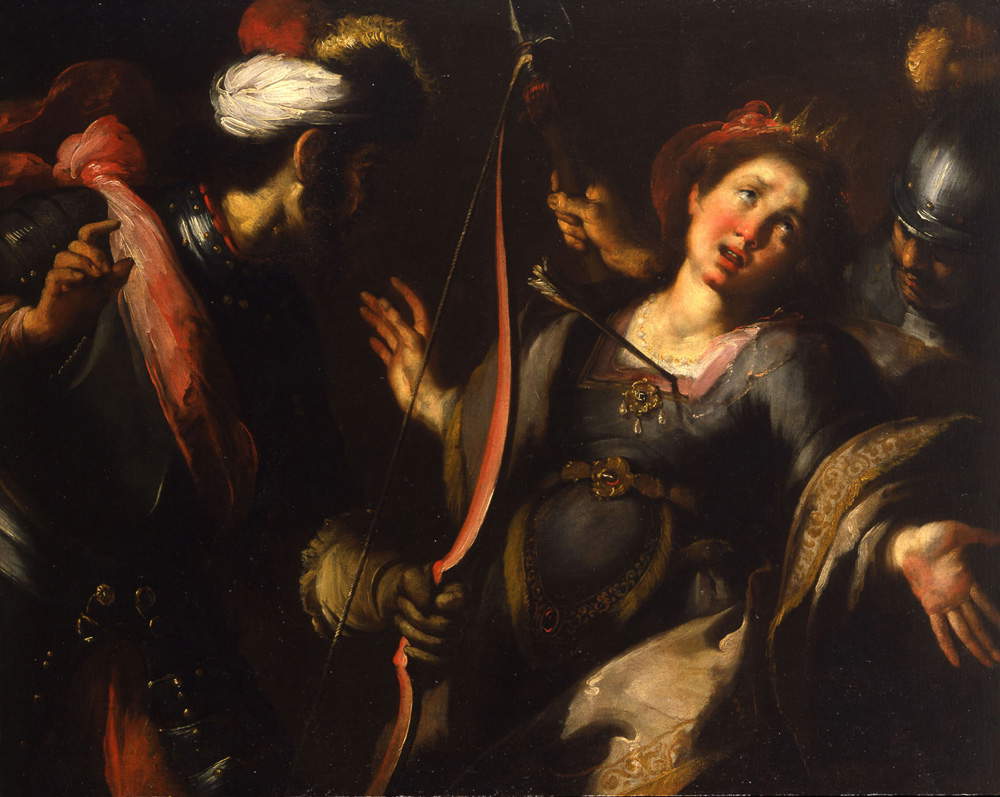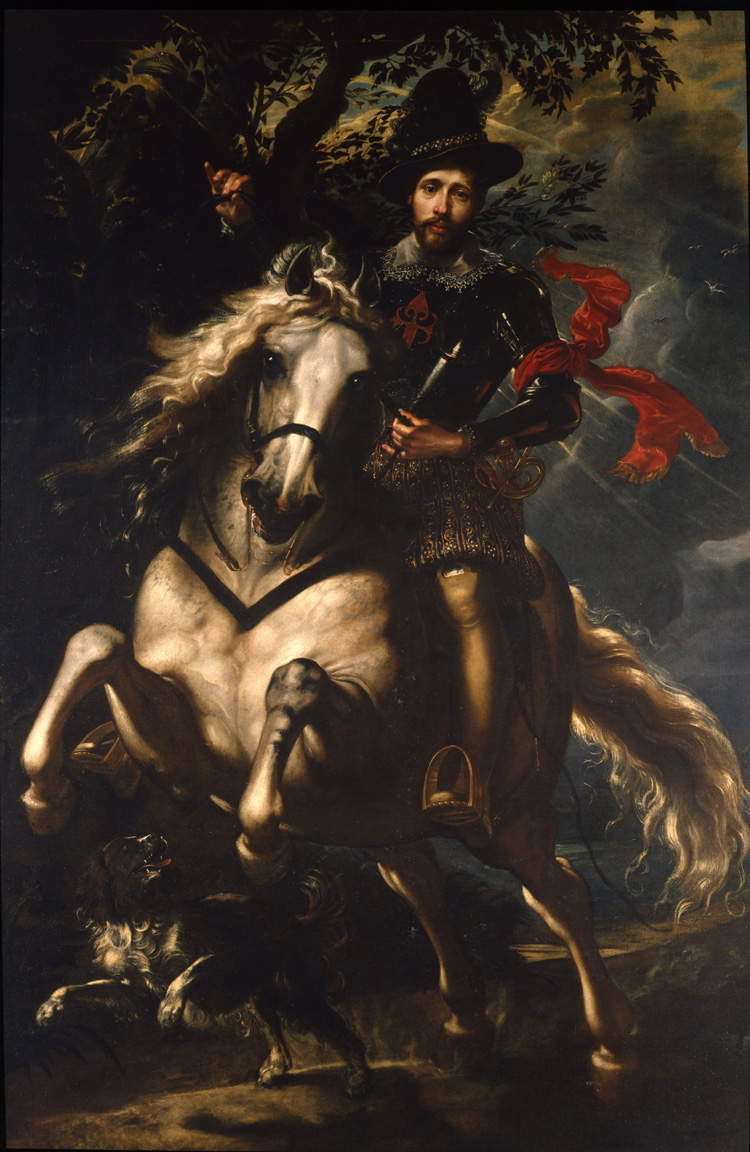Gallerie d’Italia, Milan presents The Last Caravaggio. Heirs and New Masters. Naples, Genoa and Milan (a review of Finestre Sull’Arte will be published in the coming hours. Three Cities in Comparison) to frame and illustrate the artistic events that developed in the three decades (1610-1640) following Michelangelo Merisi’s death, beginning with Caravaggio’s very last act: the 1610 Martyrdom of SantOrsola. From there, a comparison with the artists of the time through some 50 works, along an art-historical period divided between Caravaggio’s naturalism and the triumphant explosion of the Baroque. Between fascination and resistance to the new and revolutionary language. Because resistance and independence to the wonderfully cumbersome (and fruitful) legacy of Caravaggio there was, as the exhibition explains. Thus, the exhibition’s pivotal theme: a history of art in seventeenth-century Italy without Caravaggio can be and exist. Word to the curator, Alessandro Morandotti.
Luca Zuccala. Fulcrum and beginning of the exposition, in the center of the main hall, the three versions of the Martyrdom of St. Ursula: the last Caravaggio, Giulio Cesare Procaccini and Bernardo Strozzi. From the comparison of the three paintings two fundamental things immediately emerge that the exhibition wants to indicate, tell and pursue: the seventeenth century is not only Caravaggio, thus the exhibitionally affirmation that there are schools free from his influence (see the Lombard, Emilian and Genoese schools) and the constant dialogue between Procaccini, Rubens and Strozzi. What are the peculiar differences that emerge in the three works compared?
Alessandro Morandotti. The differences are notable and concern the interpretation of the subject and the style with which the three works are painted. Caravaggio’s saint tries to resist on earth by opposing death, while the same protagonist in Procaccini’s and Strozzi’s works surrenders to her own destiny that unites her to heaven. The dry, rough style and dramatic play of light and shadow in Caravaggio’s painting is negated in the works of Strozzi and Procaccini, which see the use of galliard impasti, precious and iridescent colors.
 |
| Caravaggio, Martyrdom of St. Ursula (1610; oil on canvas, 143 x 180 cm; Naples, Gallerie d’Italia, Palazzo Zevallos Stigliano) |
 |
| Bernardo Strozzi, Martyrdom of Saint Ursula (1615-1618; oil on canvas, 104 x 130 cm; Private collection. Courtesy Robilant + Voena) |
Can there be, then, a history of art in seventeenth-century Italy without Caravaggio?
Absolutely. Caravaggio counts in the places where he worked for a long time in public and in private: in Rome, in Naples and in southern Italy, but in other parts ofItaly people also paint very well without his example.
What are the stylistic choices of Procaccini and Strozzi, representing the Lombard and Genoese schools respectively? What are the mutual influences and dialogue on the Milan-Genoa axis?
What unites Procaccini and Strozzi is the idea of painting with virtuoso touches, as well as the spectacular color choices, according to stylistic daring that inaugurated the Baroque in northern Italy, also strong in the common dialogue with Rubens, whose first work arrived in Genoa in 1605.
What, on the other hand, are the choices of the Neapolitan school?
Naples is one of the most Caravaggesque cities in Italy. Caravaggio resided there at two points in his life, in 1606-1607, and again in 1609-1610, and his public and private works really changed the course of art history. We are reminded of this by the magnificent works by Battistello Caracciolo and Jusepe de Ribera in the exhibition.
At the center of it all is Spain. What are the relationships between the satellite cities Milan, Genoa and Naples, the three cornerstones of the exhibition?
The three cities gravitate around Spain: two, Milan and Naples, are ruled by the Spaniards; the third, Genoa, is the continuous cash register of the kings of Spain, which is why the Genoese have very close relations with the two Spanish capitals in Italy. We are reminded of this by the vicissitudes of the two Doria brothers, protagonists with their collections in the exhibition. Marco Antonio, the commissioner of the Caravaggio painting, has economic, emotional and artistic interests in Naples. His brother Giovan Carlo gravitates toward Milan. It is he who becomes the greatest promoter of Procaccini’s activity in Genoa.
 |
| Pieter Paul Rubens, Giovan Carlo Doria on Horseback (1606; oil on canvas, 265 x 188 cm; Genoa, Galleria Nazionale di Palazzo Spinola) |
Rubens with the Giovan Carlo Doria on Horseback breaks through the canvas and bursts upon all Genoese painting production. What does his arrival in Italy bring and entail (powerful is the influence on Procaccini’s masterful 5 x 8.5-meter Last Supper displayed in all its grandeur in the second salon, coming directly from the Church of Santissima Annunziata del Vastato in Genoa) and what are the repercussions of the Siegen artist’s impact specifically in the Genoese sphere?
Rubens invented the Baroque, and his example is crucial in two cities where the Baroque would take over from other artistic currents: Rome and Genoa particularly. In the field of portraiture, as in the field of history painting.
What, on the other hand, is the influence of van Dyck (who comes to Genoa three times) and what relationship did they both have with Caravaggio’s painting?
Van Dyck is Rubens’ lerede, and his presence in Genoa is fundamental, even more incisive than Rubens’. Caravaggio matters relatively to them: the comparison for them is with the great masters of the 16th century (Titian first of all). Their personal sensibility leads them to reshape the great models of classical art and Renaissance painting.
Warning: the translation into English of the original Italian article was created using automatic tools. We undertake to review all articles, but we do not guarantee the total absence of inaccuracies in the translation due to the program. You can find the original by clicking on the ITA button. If you find any mistake,please contact us.